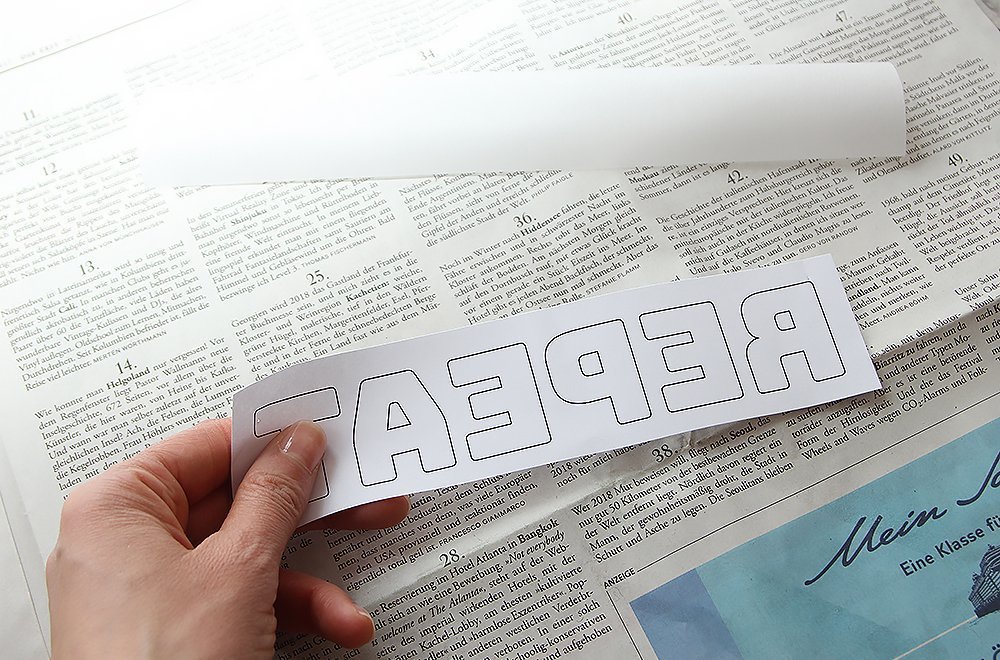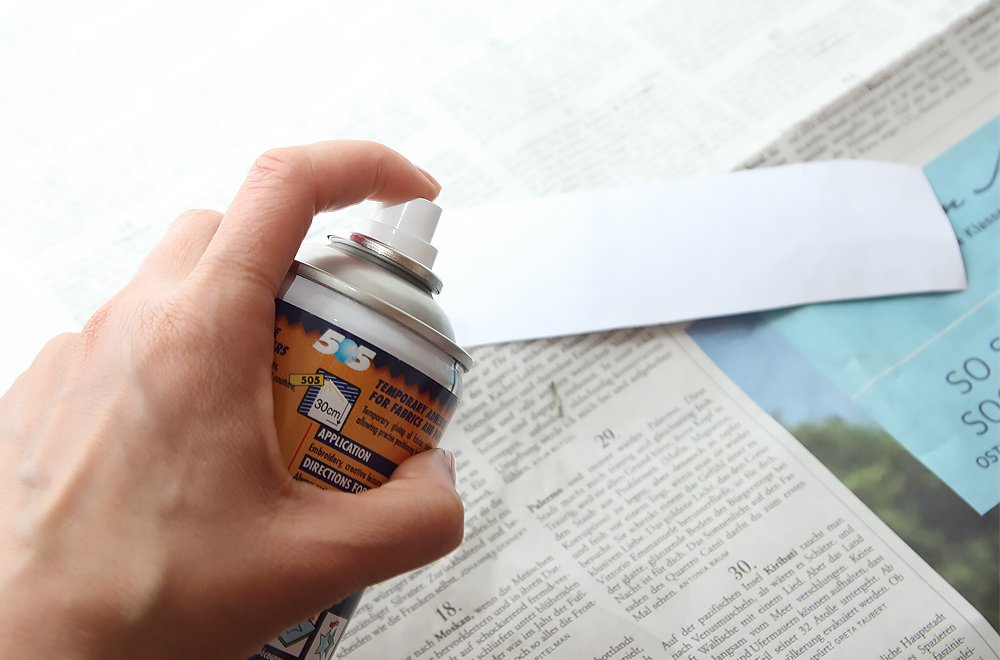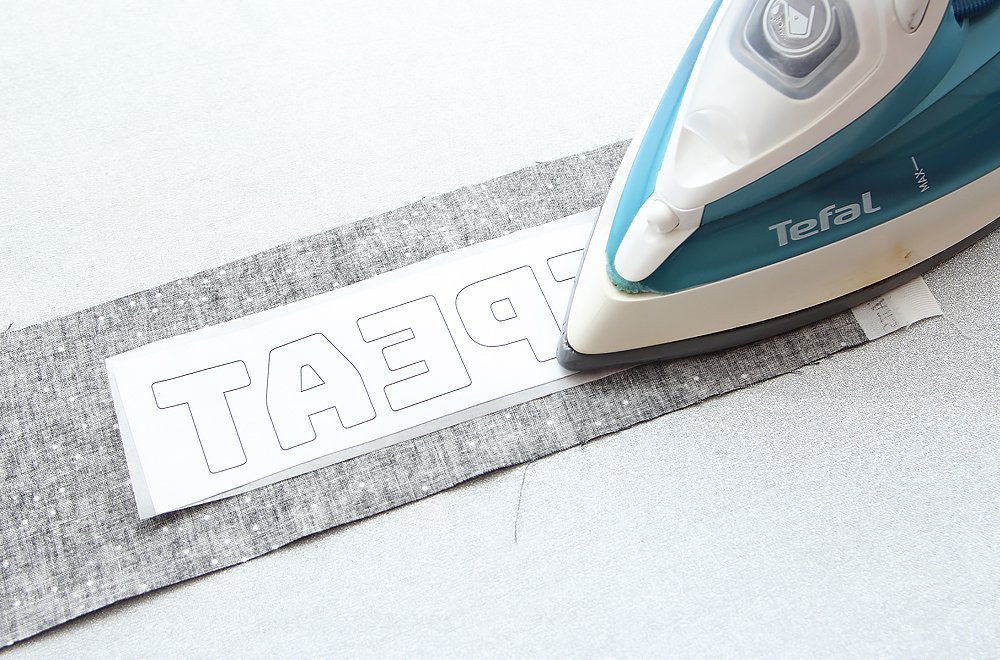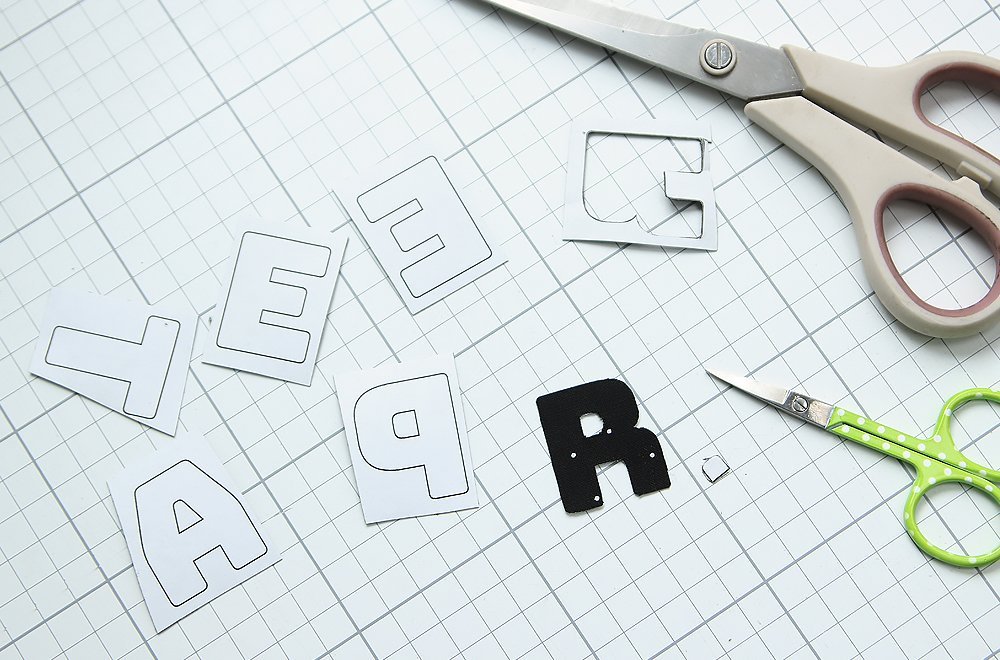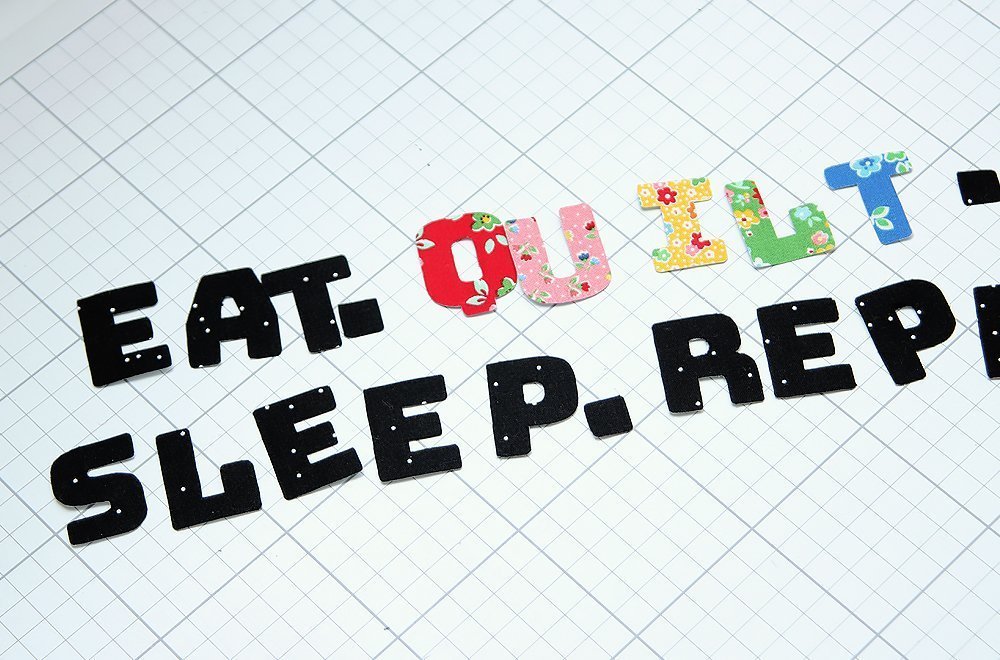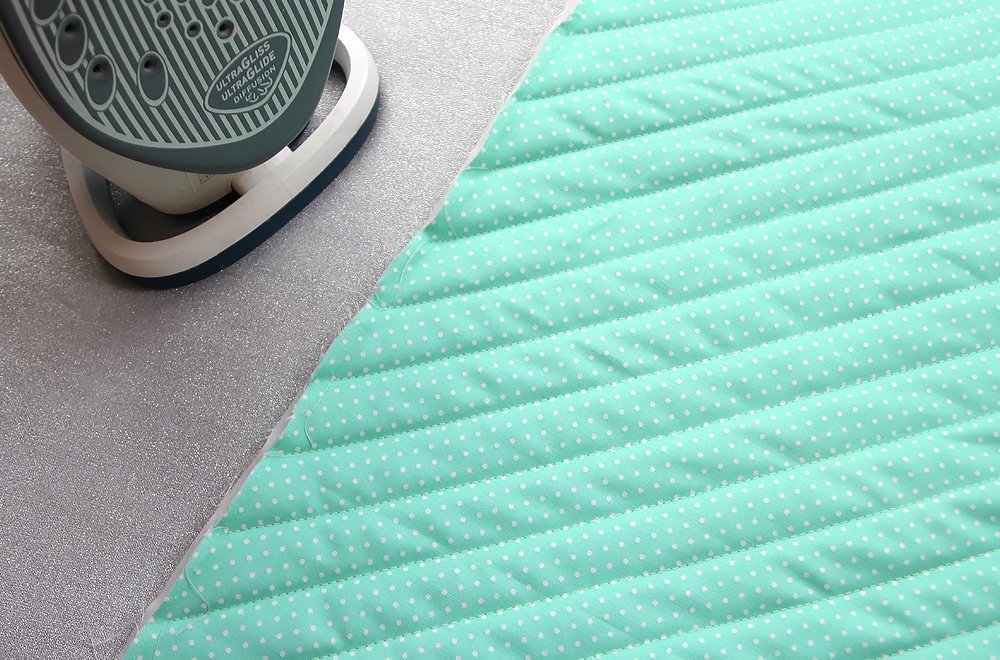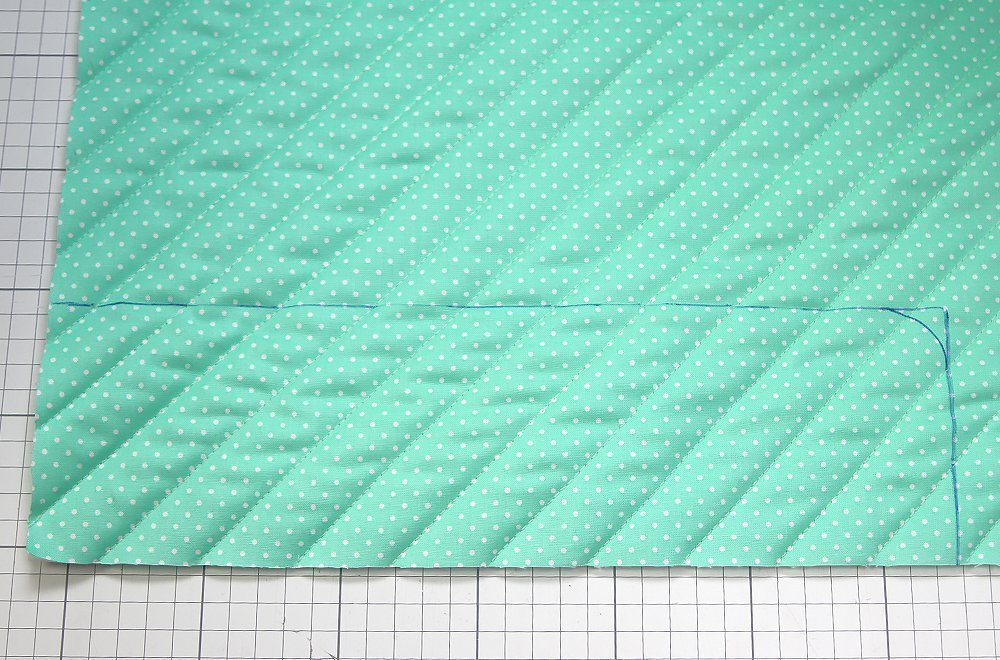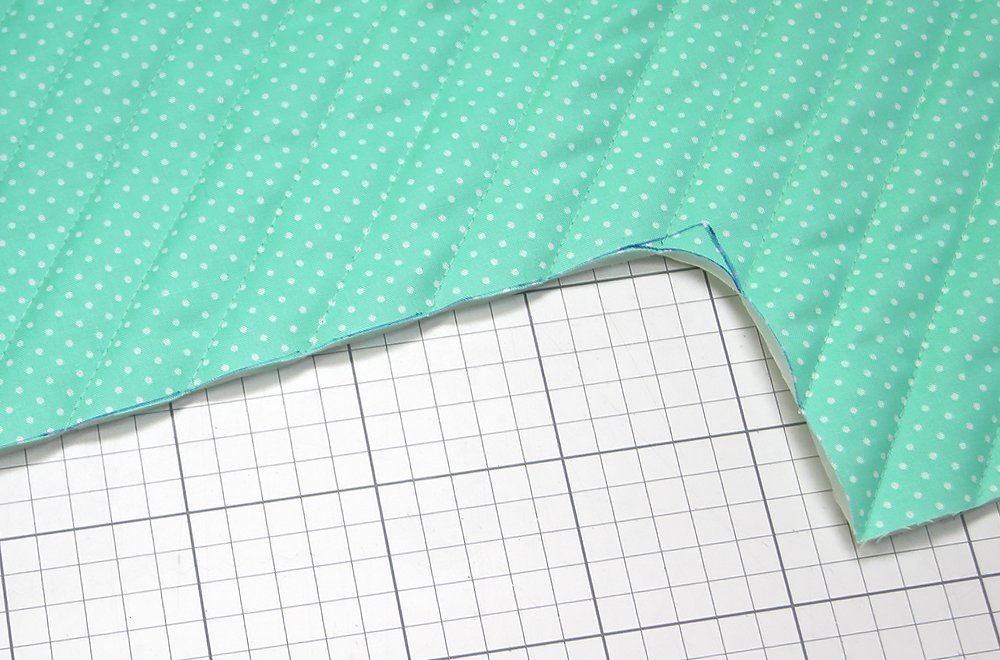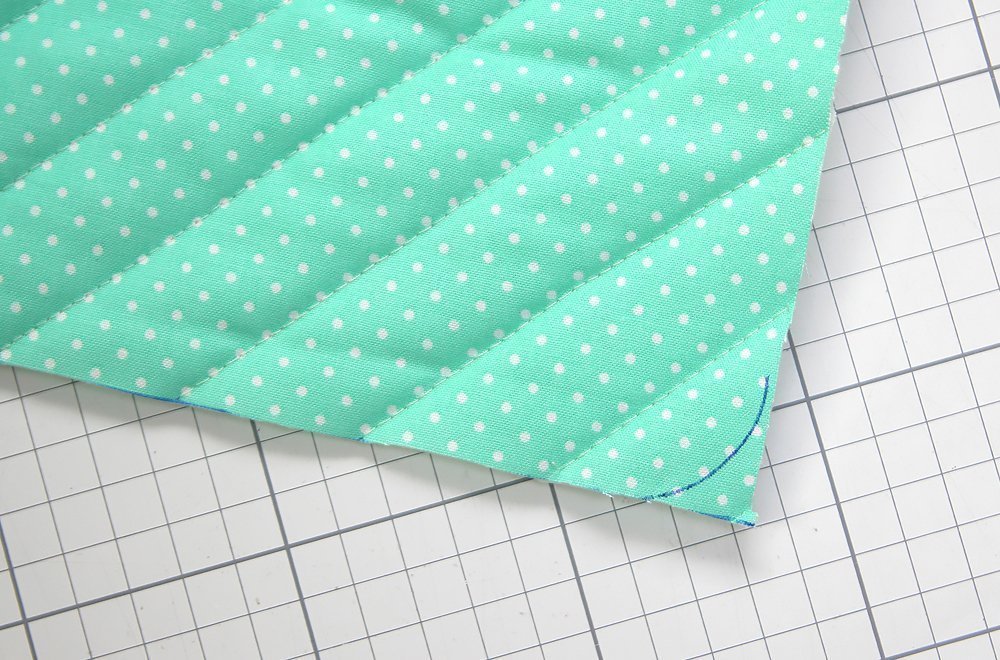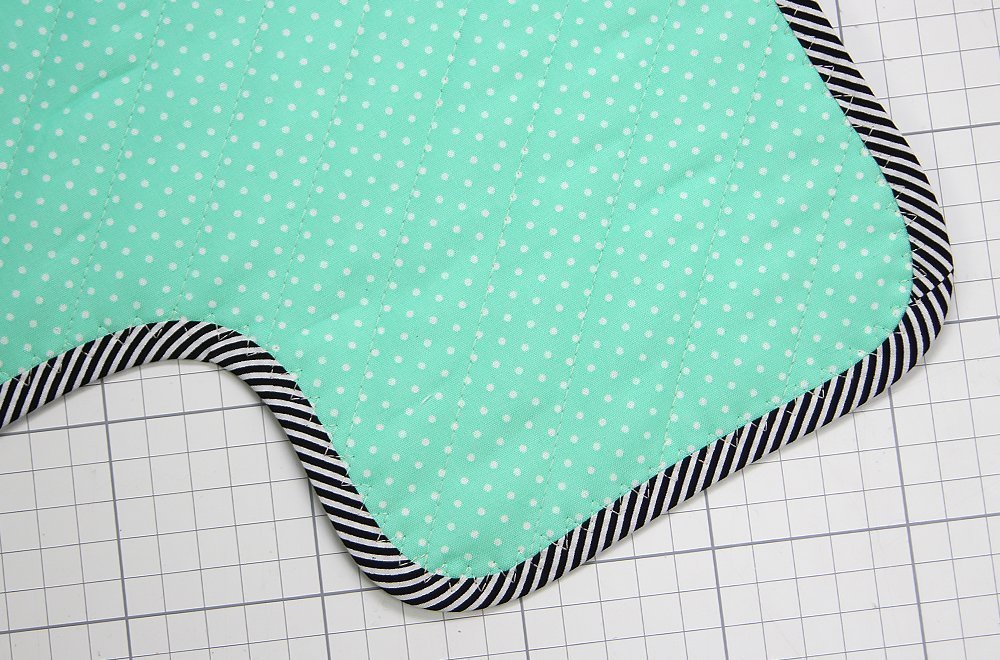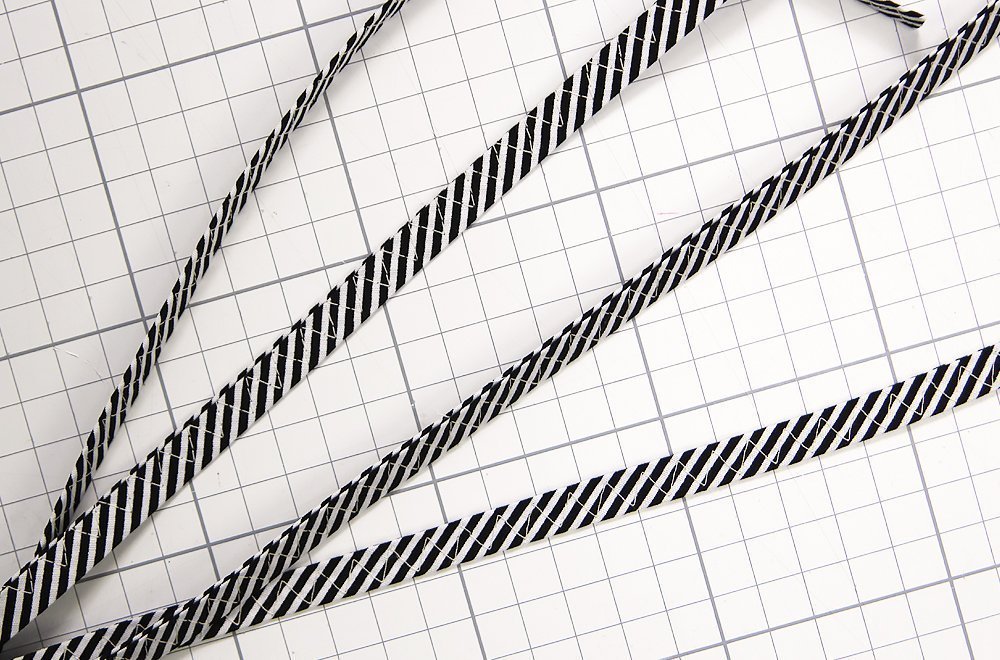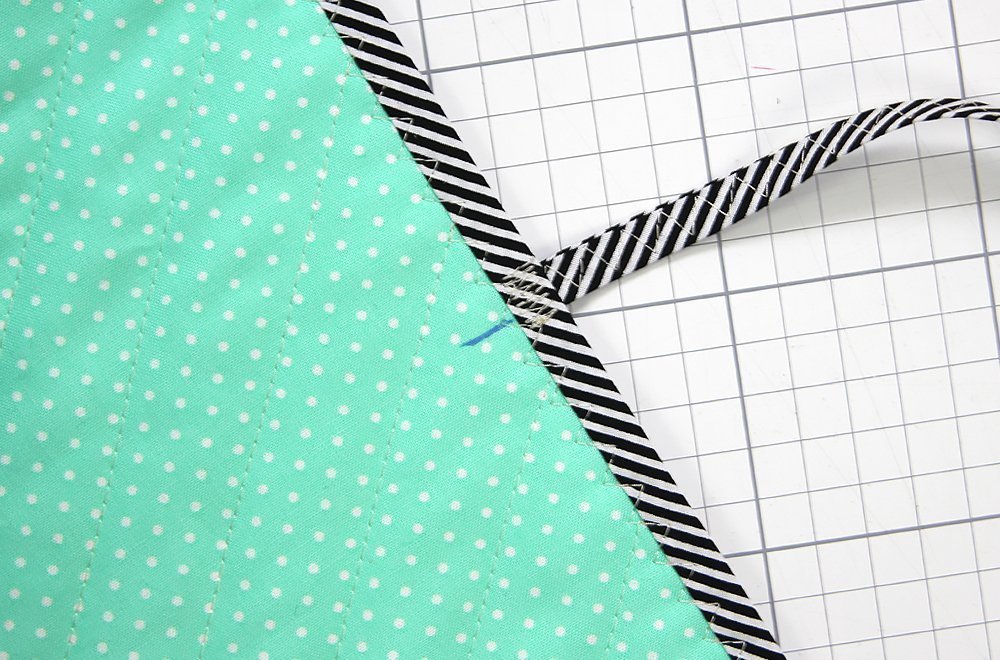Make a Sewing Machine Cover
Instructions for a sewing machine cover with ties! Perfect for keeping your sewing machine clean while it's not in use. You can download and print out the appliqué template here.
Creating appliqués
First of all, we are going to create the appliqués. You can download and print out the appliqué template here (keep the scale at 100% or "actual size"):
Eat.Quilt.Sleep.Repeat.Template
Instead of tracing the letters from the template, proceed as follows:
1. Print out the template and cut it out roughly.
2. Then spray the back with a little spray adhesive (here I used Odif adhesive, which is what I use to temporarily fasten together the different layers when quilting, but you can certainly use other adhesives) and stick it onto the paper side of the Vliesofix.
Creating the sewing machine cover
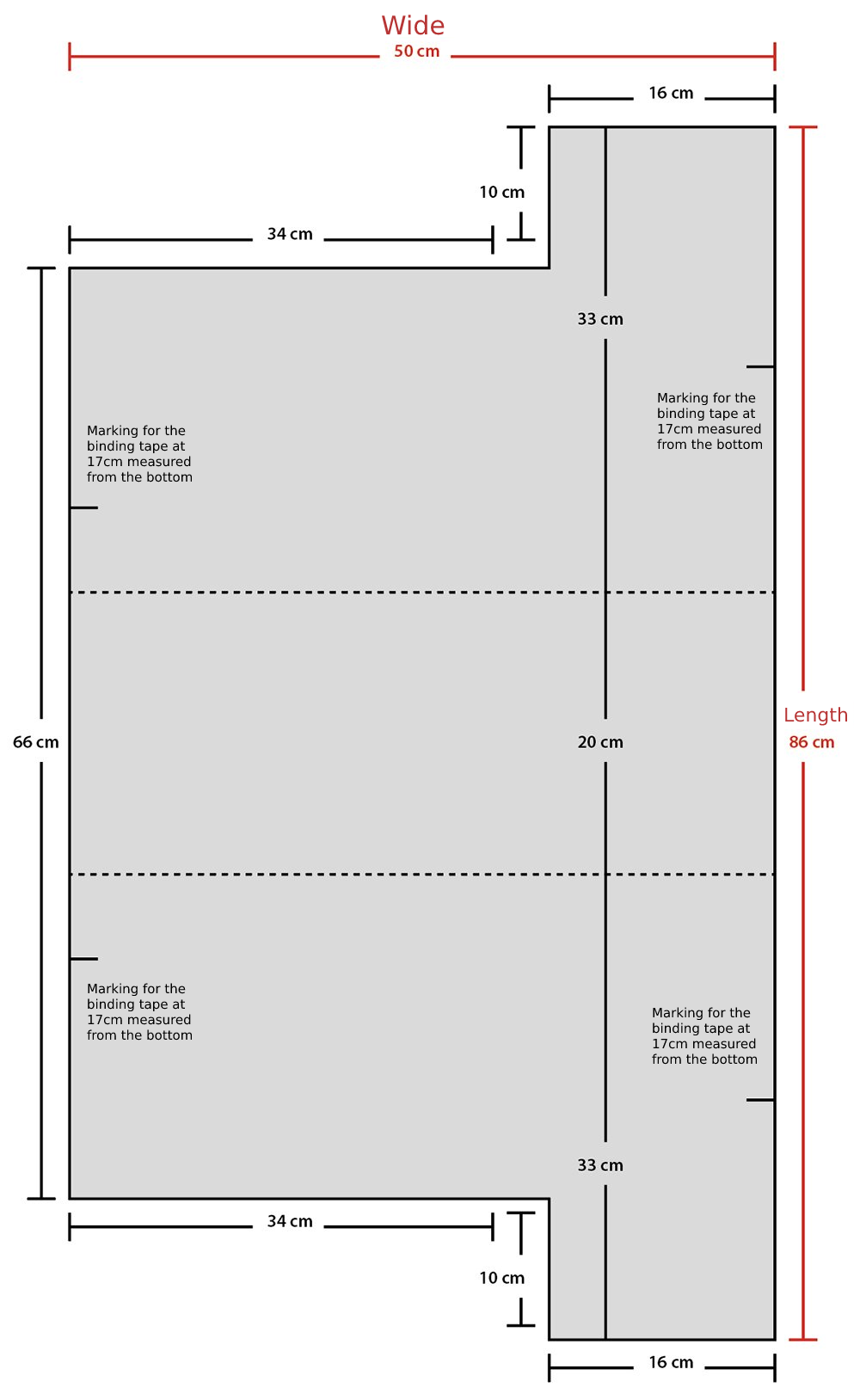
8. Lastly, iron on the appliqués using the manufacturer’s instructions and then stitch firmly. Since I won’t be putting this sewing machine cover in the washing machine, and at the most will shake it out, I’ve opted for the so-called raw edge appliqué method, so I did not neaten the edges. This is a little simpler for smaller appliqués like these letters than a zigzag border. And that’s it!


-
New Paper Piecing Classes with Eileen
Eileen is a paper piecing EXPERT! Are you interested in learning more about paper piecing and advancing your skills?...
Read More -
5 Tips for a Smooth Start to Sewing
How can I prevent the fabric from being pulled into the bobbin case area when I start sewing? Especially when...
Read More -
Rachel's Staff Pick
Rachel's Staff Pick is this Blush by Clothworks fabric collection! She recommends this fabric because it has gorgeous watercolor effects,...
Read More -
Free-Motion Quilted Placemats
The tutorial will take the quilting design from a sketch on paper to four unique placemats that will help practice...
Read More -
How to Make a Fabric Mini Basket
We can never have enough storage and when it comes Christmas season, a handmade storage basket makes the best gift....
Read More -
Victor Location Press Release
(FROM GLOBE NEWSWIRE) Siblings Scott Perry and Alyssa McDonnell, hadn’t planned on quitting their careers as an engineer and a...
Read More -
December Sew-Along Event
Join us in-store or virtually for our Holiday Sew-Along event! This event is included in your 22/23 Club membership. Make a...
Read More -
Our Victor Store is OPEN!!
IT'S FINALLY HERE!! Our Victor store is OPEN!! We thank you for your patience while we have gotten our third store...
Read More -
International Quilt Market
After three very long years, the International Quilt Market has finally returned! Alyssa, Sheila and myself (Scott) just returned from...
Read More -
Victor Store Updates from Scott & Alyssa
We are SEW EXCITED to see our sewing family growing! We are progressing with getting our new Victor store ready. We...
Read More -
Carve your Pumpkins with us!
Getting your pumpkins ready for Halloween? Carve a pumpkin with this downloadable Aurora Sewing Center stencil! DOWNLOAD STENCIL Just pick which size...
Read More -
Fun Glow-in-the-Dark Projects with Wonderfil Thread
Want to do something that really stands out this Halloween? This easy project uses machine embroidery and glow in the...
Read More -
Cleaning & Oiling Your Machine
Remove hardware Before you start your machine cleaning, remove the needle, presser foot, stitch plate, and bobbin case from your...
Read More -
We Are Expanding to Victor, NY!
Aurora Sewing Center, which has two locations in the Buffalo, New York area, is sew excited to announce they are expanding their...
Read More -
Wonder Clips
Our staff member Laura LOVES using Wonder Clips when she is quilting! They hold quilt layers together better than just...
Read More -
Customer Appreciation Days
Join us for Customer Appreciation Days!! Deals will be running in-store Thursday, Sept. 1st - Saturday, Sept. 3rd. This event is...
Read More -
Why Do I Need Firmware Upgrades for My Sewing Machine?
Firmware is a software program or an updated set of instructions used in electronic-based sewing machines that are provided by our...
Read More -
Sewing & Quilting Health Benefits
Quilting is not only a fun and creative hobby, but it also has many health benefits that can improve your...
Read More -
Steps to Sew a Faux Button Placket
Step 1. Measuring Your Bodice To start you will need your front bodice piece cut out and laid flat. You...
Read More -
BERNINA District D Dealer of the Year
We have amazing news... DRUMROLL PLEASE! Aurora Sewing Center has been awarded the BERNINA District D Dealer of the Year!...
Read More -
How to Make & Embroider a Rope Bowl
Instructions to Sew a Rope Bowl Step 1. Start fresh I like to clip a clean end to the start...
Read More
« Newer articles 1 2 3 Older articles »


